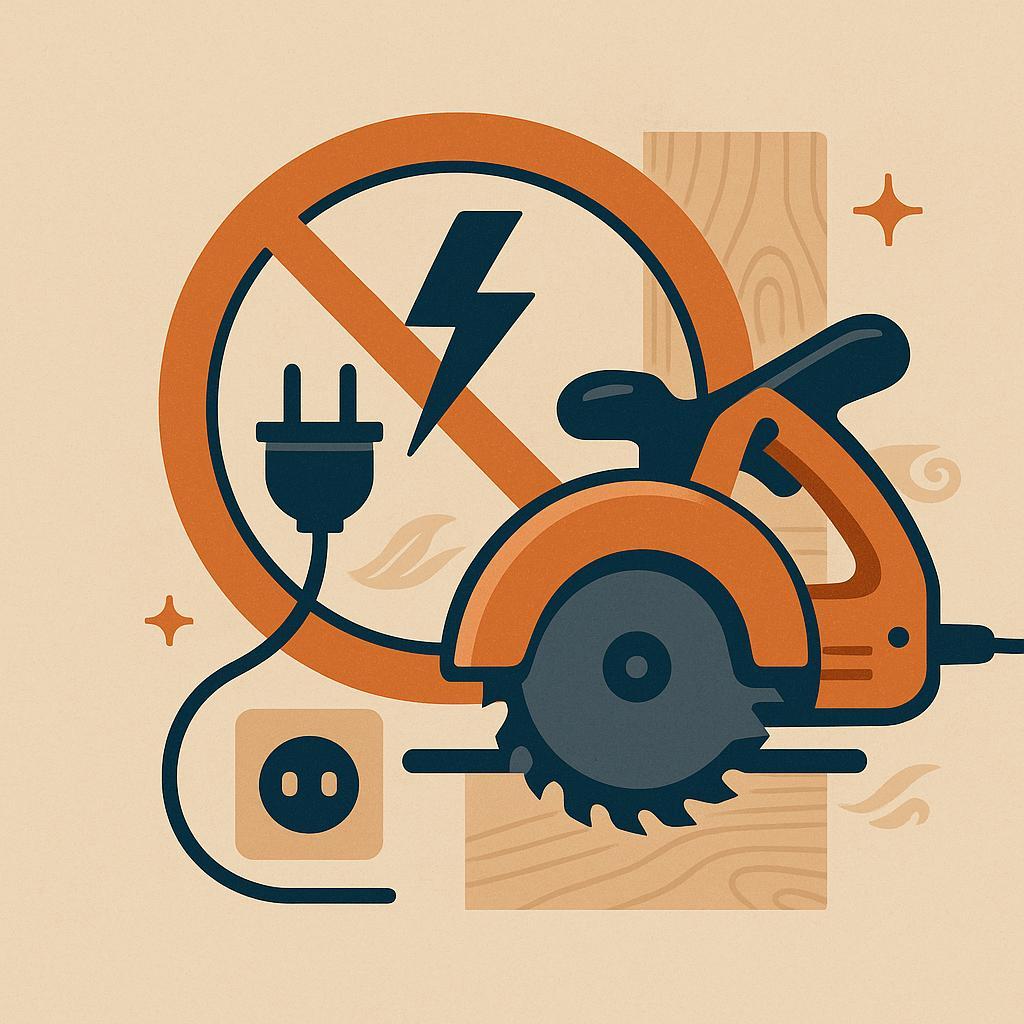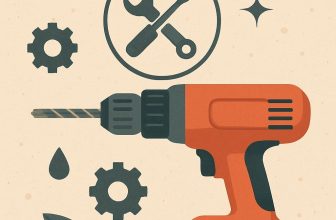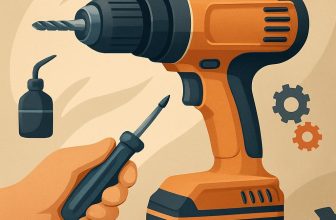
Power tools are the lifeblood of any woodshop-and so are the safeguards that keep them safe. A single spark, a frayed cord, or an overloaded circuit can turn a satisfying build into a scare you won't forget. This article helps woodworking enthusiasts understand how smart electrical practices protect you, your tools, and your workspace. You'll learn how to inspect cords and outlets, choose the right extension cords, and use grounding and protective devices; how to manage dust and moisture around electrics; and practical checklists to prevent common electrical hazards. Read on to work smarter, safer, and with confidence.
Smart Electrical Safety Essentials for Woodworking Power Tools
Smart electrical safety starts with how you set up and inspect your tools. Before you power a saw or drill, walk the work area and review every cord: check for frays, exposed wires, or cracked insulation. Replace damaged cords or tools rather than patching them. Use grounded outlets and verify your circuit has GFCI protection, especially near damp benches or where sawdust tends to accumulate. Keep cords off the floor and away from moving blades or clamps; use cord reels or wall-mounted hooks to reduce trip hazards.
Daily electrical safety checks set the tone for a safe session. Before you start, verify each tool connection, inspect cords, and confirm your outlets are protected. Perform these speedy checks every time:
- Inspect cords for cuts, wear, or exposed conductors; replace if damaged.
- Test GFCI outlets (press the test button and reset) to ensure proper function.
- keep cords away from cutting lines, dust collection hoses, and wet areas.
Operational habits matter to prevent fires and shocks. Unplug tools before changing blades or making adjustments,and rely on guards and safety switches. When a tool starts to feel warm or shows signs of arcing, stop, unplug, and inspect. Consider using surge protectors for sensitive electronics and avoid running multiple high-draw devices on a single strip. Maintain a clean, dry workspace so moisture and dust don't spread across outlets.
| Item | Action | Benefit |
| GFCI protection | test regularly and ensure it trips | Shuts power off during faults |
| Cord condition | Inspect for wear; replace damaged cords | Reduces shock and fire risk |
| Switch/accessibility | Keep switches accessible; unplug before maintenance | Prevents accidental starts |
document and train. Label circuits,designate a dedicated outlet for power tools,and keep a small safety reference near the bench. Turn off power when not in use, and store extension cords properly to reduce wear. A disciplined approach to electrical safety protects both you and your workshop.
Build Your Dream Workshop on a Budget →
Grounding and GFCI Protection in the Workshop
Grounding and GFCI protection are your first line of defense against electrical shock in a busy woodworking space. The combination of metal tools, damp wood, and fine dust can create hidden pathways for stray currents, so ensuring a solid ground and properly functioning ground-fault interrupters keeps you and your shop safe. In practice, this means treating every outlet as a potential fault point and choosing solutions that trip quickly when anything unusual occurs.
Actionable steps to build a safer workspace:
- use GFCI protection on every outlet in the workshop, especially near sinks, basins, or areas where moisture is present.
- Inspect cords and plugs for cuts, fraying, or loose connections and replace damaged cords instantly.
- Test the GFCI monthly by pressing the TEST button and then the RESET button to confirm it trips and resets correctly.
- Avoid bypassing grounding-use grounded outlets and, if a tool is double-insulated, ensure it is properly marked and still use a GFCI for protection on the circuit.
- Keep cords off the floor and away from metal shavings or water spills to prevent damage and trips.
Here's a concise reference to keep on hand during setup and testing:
| Aspect | Recommendation |
|---|---|
| GFCI coverage | All shop outlets; consider portable GFCIs for extension cords |
| Testing frequency | Test monthly; press TEST and confirm RESET |
| Cords & plugs safety | Use rated, undamaged grounded cords; replace damaged cords |
Additional safety reminders:
- Always switch off and unplug tools before inspecting wiring or changing components.
- Keep outlets and cords away from water, dust, and metal shavings; use cord protectors where needed.
- Use a dedicated circuit for high-draw tools to prevent overloading other devices.
- If a GFCI trips, investigate moisture, damaged cords, or overloads and address the root cause rather than repeatedly resetting.
Build Your Dream Workshop on a Budget →
Safe Extension Cords and Cable Management for Power Tools
Choosing the right extension cord is the first line of defense in a safe woodworking space. Look for cords rated for the work environment (indoor or outdoor) with rugged jackets that resist dust and nicks. For most 15-amp power tools, opt for heavier gauges like 14- or 12-AWG rather than thin cords, and never daisy-chain two cords together. Always verify the tool's amperage and choose a cord whose rating comfortably exceeds that draw to prevent overheating and voltage drop.
plan a smart layout that keeps cords off the floor and away from cutting zones. Use cord reels or retractable reels for long runs, and secure cords with clips, hooks, or cable ducts along walls or under benches. When crossing traffic areas, use floor cord covers or ramp-style protectors so people and tool bases don't trip. Keep extension cords away from water, dust, and moisture; never route near damp areas or into work zones where they can snag or get pinched by doors.
Regular inspection is essential: look for cracks,exposed copper,or softened insulation. Replace any damaged cords immediately and avoid using adapters that create loose connections. Label cords by tool or work area so you know which cord powers which tool, reducing switching errors.For quick guidance on cord size and length, see the table below.
| Scenario | Cord Gauge (AWG) | Max Recommended Run |
|---|---|---|
| Light loads (drill, sander) | 16 AWG | Up to 25 ft |
| Medium loads (circular saw) | 14 AWG | Up to 50 ft |
| Heavy loads (table saw, planer) | 12 AWG | Up to 100 ft |
Along with choosing the right cord and keeping it tidy, incorporate safety devices and routines. Always plug extension cords into GFCI-protected outlets when working near water or damp wood.Consider retractable reels mounted high on a wall to keep cords clear of benches and cutting paths, and use floor ramps or cord covers on any shared walkways. Make a habit of inspecting cords before each session, coiling or retracting them after use, and replacing any frayed or warm cords immediately to maintain a safe, efficient workspace.
Build Your Dream Workshop on a Budget →
Regular Inspections and Maintenance to Prevent Electrical Hazards
Before you power up, perform a quick visual inspection of the tool's electrical system.Look for cracked insulation, damaged plugs, exposed conductors, or scorch marks on the housing.Check the cord for fraying, kinks, or cuts, and examine the strain relief where the cord enters the tool. Ensure the plug blades are straight and free of corrosion. If anything appears compromised, set the tool aside and repair or replace it before use. always unplug the tool before inspecting and keep moisture away from any electrical parts.
Establish a regular maintenance routine that covers electrical components as well as cleanliness. Create a simple checklist and perform tasks on a predictable schedule to prevent hidden hazards.Along with routine inspection,clean dust and debris from vents using a dry brush or compressed air from a safe distance,never with liquids.Keep work areas dry and avoid using water near outlets or power cords. Periodically verify that the GFCI outlet or switch trips properly by pressing the test button and resetting it.Use only extension cords rated for your tool's amperage whenever a cord is required,and avoid running cords under rugs or through doors where they can be pinched. The following quick table helps organize common tasks at a glance:
| Area | Task | Frequency | Notes |
|---|---|---|---|
| Power cord & plug | inspect insulation, fraying, damage | Monthly | Replace if damaged |
| GFCI/outlet & switch | Test function; check for warmth | Monthly | Trip and reset as needed |
| Ventilation & dust | clear dust from motor housing & vents | Monthly | Keep dry |
| Cord routing | Check strain reliefs; avoid pinch points | Quarterly | Re-secure with clamps if needed |
Know when to retire an electrical tool or replace cords. If you notice frayed insulation, exposed conductors, bent or cracked plugs, or heat discoloration, stop using the tool immediately and replace the damaged parts. Unusual heat, burning odors, or frequent breaker trips are warning signs that insulation or safety switches may have degraded. Do not attempt temporary fixes such as splicing cords or taping over damaged insulation; those measures create ongoing fire or shock risks. When in doubt, consult a qualified technician or replace the unit to maintain a safe workshop environment.
Document and communicate your findings. Maintain a simple maintenance log with dates, inspections performed, and parts replaced. Mark cords and tools with last-service dates to build a clear replacement timeline. Store tools in a dry, ventilated area away from moisture and clutter, and keep extension cables neatly coiled with proper strain relief. A proactive mindset-paired with a routine checklist-helps you catch hazards before they become active risks in the shop.
Build Your Dream workshop on a Budget →
Safe Operating Procedures for Start Up and Shutdown of Power Tools
before you power up any woodworking tool, run a quick safety check. Inspect for visible damage, ensure guards sit correctly, and verify the cord and plug are intact. Unplug the tool during setup or blade changes, and keep the switch in the OFF position until you're ready to start. Clear the work area of debris and ensure you're wearing eye protection, hearing protection, and a dust mask as needed to stay safe from flying chips and noise.
During startup, verify the power source is stable and the emergency stop works. Confirm the safety guard is closed and the fence or work surface is aligned for the cut. With both hands clear and the workpiece secured, switch ON and let the tool come to full speed before engaging the stock. Maintain a stable stance and keep your body out of the path of potential kickback; avoid reaching over running parts, and use push blocks or featherboards to guide material.
| Item | Status | Notes |
|---|---|---|
| Power source connected | OK | Plug firmly |
| Guard in place | OK | Seating aligned |
| Emergency stop tested | OK | Within reach |
| Dust extraction connected | OK | Active with tool |
| Workpiece secured | N/A | Clamped |
Shutdown should be deliberate and quiet. When you finish, switch the tool OFF and unplug it from the power source. Wait until the blade or bit has entirely stopped before touching the work or making adjustments. Clean the workspace, retract or lock adjustable components, and return tools to their storage spots. If dust extraction is connected, power it down only after the machine has stopped and is unplugged.
To keep routines consistent, build a quick post-use checklist and verify critical safety features regularly. Re-check guards, inspect cords for wear, and confirm the emergency stop remains accessible. Schedule maintenance according to the manufacturer's guidelines and note any unusual noises or vibrations. A simple restart routine helps: OFF, UNPLUG, CLEAN, STORE – repeat after every session to reduce wear and risk. In a shared workshop, post a visible SOP and ensure new users review safety steps before starting.
Build Your dream Workshop on a Budget →
Moisture and Spark Risk Prevention in the Woodshop
Moisture in a woodshop can creep in from humidity, rain leaks, or damp lumber. Wet floors and condensation on metal surfaces increase the risk of electric shock and corrosion. To prevent trouble before it starts,prioritize a dry environment: dry hands before touching any power switch,elevate cords and outlets above puddle-prone floors,and use GFCI outlets in damp zones.Keep a simple dehumidification routine and store lumber in a dry area with sealed containers or desiccants. A quick moisture meter check helps you catch rising humidity before it affects equipment.
Spark risk in the workshop is fueled by dust, resin buildup, oily finishes, and hot tool components. wood dust can ignite if it sits near sparks or warm bearings. Combat this with a robust dust collection system, regular sweeping, and sealed waste containers. Move flammable finishes well away from tools, and store solvents in metal cabinets with proper lids. Ground every corded tool, avoid chaining multiple power strips, and route cords away from water and benches. Add physical barriers or shields around motors where possible to prevent sparks from reaching flammable clutter.
A concise, at-a-glance action table helps you keep safety on track:
| Action | Why it helps | When to do |
|---|---|---|
| Dry environment checks | Reduces shock risk and corrosion | Daily |
| Dust control during operation | Lowers ignition sources | During and after use |
| Cord and outlet safety | Prevents shorts and water exposure | Before each project |
Beyond the table, establish a simple daily routine: inspect cords for nicks or cracks, test GFCI outlets, and sweep up dust before shutting down. Store flammables in cool, ventilated areas away from heat sources, and keep a dry, organized workspace so you can spot moisture or sparks quickly. Small habits add up to big safety gains over time.
Build Your Dream Workshop on a Budget →
Q&A
How can I prevent electrical shocks when using power tools in my workshop?
Use grounded outlets or GFCIs and keep cords dry and intact.Unplug before changing blades or making adjustments,and keep water away from the work area. Regularly inspect cords for cuts or exposed insulation.
What should I consider when choosing extension cords for woodworking tools?
Pick a cord with the right gauge for your tool's amperage, and don't exceed its rated length. Never chain multiple cords or run them through doorways or high-traffic zones, and keep connections off the shop floor to avoid moisture and trip hazards. Use outdoor-rated cords if moisture or humidity is a concern.
How do I manage dust and debris around electrical components?
Keep dust collection as close as possible and unplug before cleaning exposed parts. Use a vacuum or brush to clear vents rather than blowing air,and avoid blocking cooling vents with sawdust.
What should I do if a tool overheats or the plug feels warm?
Stop using the tool, unplug it, and let it cool while you inspect the cord and plug for damage. Check for worn insulation,a loose plug,or a faulty switch,and have it repaired before reuse.
In Conclusion
Smart electrical safety isn't a rule to follow so much as the quiet engine behind every clean cut and confident finish. The key takeaway is simple: plan,inspect,and respect your tools,because safety protects both your progress and your hands. When you prioritize proper grounding, correct extension cords, dust control, and unplugging before adjustments, your workshop stays productive rather than derailed by an avoidable mishap. This matters to woodworking enthusiasts who value precision and longevity in their craft. Try applying one tip today: check cords and GFCIs, then tackle a small project. Explore more guides, implement the insights, and build with confidence. Here's to safer, brighter projects ahead.







Great tips! Safety should always come first when working with power tools. Thanks for sharing!
These tips are incredibly useful! It’s so easy to overlook safety when we get caught up in our projects, but protecting ourselves is essential.
Absolutely agree, Roy and Jerry! It’s crucial to prioritize safety, especially in woodworking where power tools can be risky. These tips are a great reminder to always stay vigilant!
Thanks for sharing these important reminders! Safety is key, and being proactive with electrical measures can prevent accidents in the workshop. Always appreciate practical advice like this!
These tips are a fantastic reminder that safety shouldn’t be taken for granted, especially in woodworking! Thanks for highlighting the importance of being cautious while working with power tools.
These safety tips are invaluable! It’s so easy to get wrapped up in the creativity of woodworking, but we must never compromise on safety. Appreciate the reminders!
Great insights, everyone! It’s so important to stay aware and implement these safety measures to ensure we can enjoy our woodworking projects without accidents. Let’s keep the focus on safety!
Excellent reminders, everyone! Safety should always be our top priority in the workshop. Thanks for sharing such helpful tips to keep us all safe while enjoying our woodworking passion!
Absolutely! It’s crucial that we prioritize safety in our woodworking practices, and these electrical safety tips are a fantastic way to ensure we’re protecting ourselves while enjoying our craft. Let’s keep the conversation going and share more ways to stay safe!
I completely agree with everyone; safety is essential in woodworking! These tips really help reinforce the habits we need to develop to make sure we can create amazing projects while keeping ourselves and others safe. Let’s keep sharing knowledge and supporting each other!
I wholeheartedly agree with all these sentiments! Safety is key in woodworking, and these tips serve as a vital reminder to always be cautious while we pursue our creative endeavors. Let’s continue to prioritize safety and learn from one another!
I completely agree with you all! Safety must always come first in our woodworking journey, and these electrical safety tips are invaluable for helping us craft with confidence. Let’s keep exchanging ideas and reinforcing good practices to ensure a safe workspace for everyone!
I completely agree with all the great points made here! Ensuring our safety while working with power tools not only protects us but also enhances our enjoyment of woodworking. Let’s keep this discussion going and share more tips and experiences to foster a culture of safety in our workshops!
I totally agree with all the previous comments! Safety is paramount when we’re using power tools in woodworking, and these tips are a great resource to help us remain vigilant. Let’s keep sharing our experiences and insights to inspire a safe and productive workshop environment for everyone involved!
I truly resonate with all the previous comments! Safety in woodworking is non-negotiable, and these electrical safety tips are a fantastic framework to ensure we all stay protected while crafting. Let’s continue to share our experiences and best practices to build a supportive and safe woodworking community!
I echo all the fantastic insights shared here! Prioritizing safety is crucial in woodworking, especially when handling power tools, and these electrical safety tips provide a solid foundation for a secure environment. Let’s keep the conversation alive and share our knowledge to help each other out!
I wholeheartedly support all the wonderful sentiments shared here! Electrical safety is such a vital aspect of woodworking, and these tips serve as a reminder for us to remain vigilant. Let’s continue to uplift one another by sharing more insights and experiences to create not just safe, but also enjoyable woodworking spaces for all!